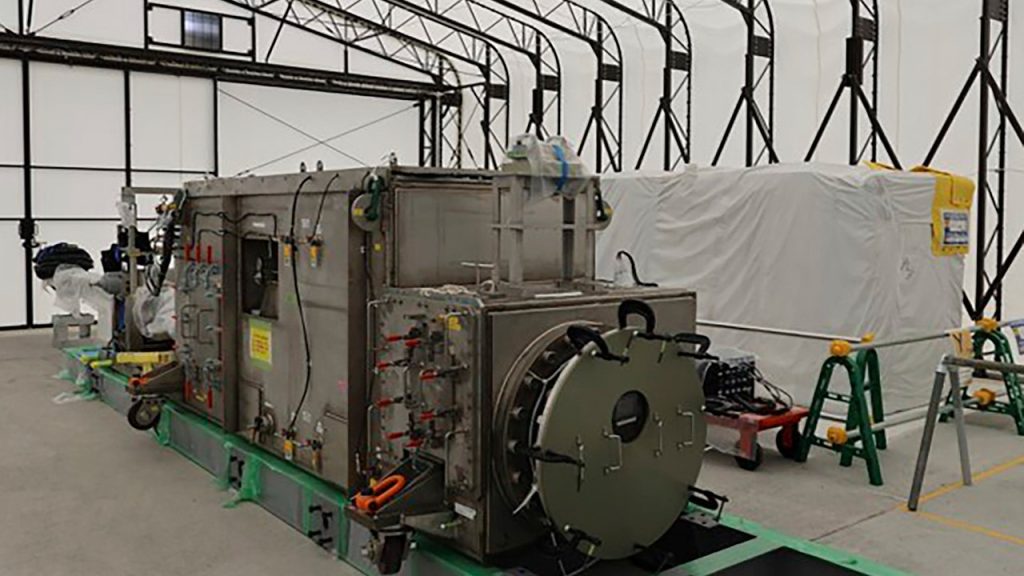The attempt to use an extendable robot to remove a fragment of melted fuel from a wrecked reactor at Japan’s Fukushima Daiichi nuclear power plant was suspended due to a technical issue. This operation was part of the fuel debris removal phase, considered the most challenging part of the decades-long decommissioning process of the plant. The reactor suffered damage from the 2011 earthquake and tsunami disaster, leading to the destruction of three reactors. The suspended operation involved collecting a tiny sample of debris from inside the Unit 2 reactor’s primary containment vessel, which would provide crucial data for developing future decommissioning methods and necessary technology.
The work was halted when workers discovered that five 1.5-meter pipes used to maneuver the robot were placed in the wrong order and could not be corrected within the time limit for their radiation exposure. The pipes were meant to push the robot inside the vessel and pull it back out once the task was completed. The robot, which can extend up to about 22 meters, would use a device equipped with tongs to collect a fragment from the surface of the melted fuel mound. Despite this setback, TEPCO, the plant operator, expressed a commitment to addressing the issue and ensuring the safe resumption of the retrieval mission.
TEPCO President Tomoaki Kobayakawa emphasized that safety was the priority over rushing the process. The goal of the operation was to bring back less than 3 grams of the estimated 880 tons of fatally radioactive molten fuel. This small sample was considered vital in obtaining key data to develop future decommissioning methods and necessary technology and robots. A better understanding of the melted fuel debris was deemed essential to the decommissioning of the three wrecked reactors and the whole plant. The government and TEPCO remained committed to their 30 to 40-year cleanup target, despite criticism of its feasibility, with no specific plans regarding the full removal or storage of the melted fuel debris.
TEPCO spokesperson Kenichi Takahara described the pipe setup problem as a basic mistake and assured that investigations were ongoing to determine the cause and implement preventive measures to avoid a recurrence of such issues in the future. The retrieval mission, which was supposed to last for two weeks, was postponed indefinitely until the problem was resolved. The robot, operated remotely from a safer location, was equipped with the capabilities to reach the target area and collect the necessary fragment using tongs. The operation required meticulous planning and execution to ensure the safety of workers and the success of the task at hand.
Experts asserted that the successful retrieval of the melted fuel fragment was crucial in advancing the decommissioning efforts at the Fukushima Daiichi nuclear power plant. This operation represented a significant milestone in the cleanup process, as it aimed to provide valuable insights that would guide future decommissioning strategies and the development of relevant technologies. The complex nature of the operation underscored the challenges and risks involved in handling the radioactive debris, necessitating a cautious and methodical approach to ensure the safety of personnel and the environment. The temporary suspension highlighted the importance of stringent safety protocols and thorough preparation in managing such high-stakes operations effectively.
In conclusion, the attempt to retrieve a fragment of melted fuel from the wrecked reactor at Fukushima Daiichi represented a critical phase in the ongoing decommissioning process. Despite facing technical challenges that led to the suspension of the operation, TEPCO and government officials remained committed to overcoming obstacles and advancing the cleanup efforts at the site. The retrieval mission was seen as a crucial step in gathering essential data for future decommissioning activities and developing the necessary technology to address the complex task of handling melted fuel debris. As the authorities continued to work towards their long-term cleanup target, the focus on safety, thorough investigation of issues, and the implementation of preventive measures remained paramount in ensuring the success of the decommissioning efforts at Fukushima Daiichi.


